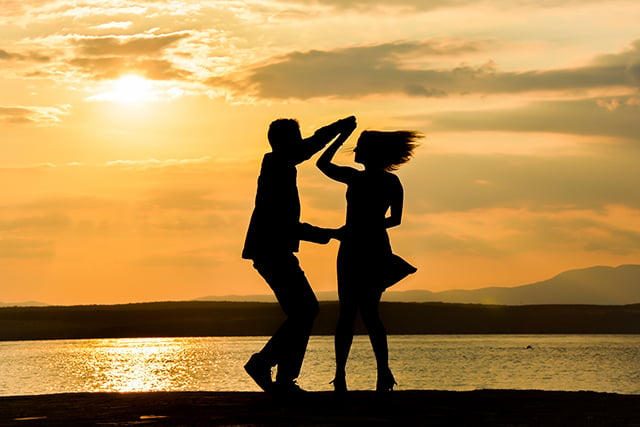- Posted by Jared
- Category:
- 0 Comments
Cuban Salsa: More than Just a Dance
I took my first Rueda de Casino class in Mexico City in the summer of 2011. I signed up for it because it was the closest dance studio to my apartment, and I had no idea that Cuban salsa was different from New York salsa or the salsa that I had danced at small, crowded clubs in Central America and Peru. That fall, I spent the semester studying at the University of Havana. In Havana, I took private classes and tried to go out casino dancing as much as possible.
I quickly became hooked.
Cuban salsa or casino is a type of salsa that was developed in recreation center of Havana in the 1950s. A group of young people decided to create their own type of salsa, with specific moves danced in partners in a large circle, or a rueda.
Casino dancing rotates along two circular axes. Between partners, Cuban salsa is not danced in a back-and-forth motion like most forms of salsa, but rather in an endless circle, with partners twirling and stepping around one another in a merry-go-round fashion.
In addition, Cuban salsa’s most famous form is the rueda de casino. Rueda is a synchronized, improvised couples’ dance, similar to a square dance from the US South. One person chooses to be the caller, and yells out moves that are well-known to the rest of the group. Women are passed along the circle from partner to partner following the cue of Dame! (Give me!).
The beauty of Cuban salsa is that you can jump in to a group of ten dancers, all from different countries, none of whom you know, and together, instantly create a beautiful, synchronized dance choreography.
No matter what city I am in, I dance Cuban salsa. In New York City, I joined an extensive community of Rueda enthusiasts, who organized outdoor dancing events in Central Park and even an annual, day-long “Ruedathon” with flash mobs at 26 spots across the city. In Washington DC, the DC Casineros danced on the Lincoln Memorial steps, and at Dupont Circle. The yearly San Francisco Rueda festival is the largest of its kind in the US, and brings together dancers from across the country and even across the world.
In recent years, Cuban salsa has become a worldwide craze. Friends and fellow dancers fly to Tokyo, Medellin, Paris, Stockholm, and, of course, Havana for rueda conferences and festivals. However, I greatly believe that the lure of Cuban salsa lies in so many reasons beyond just the beauty of the dance.
Cuban salsa creates some of the best examples of healthy communities: groups of people who learn, move, laugh, and grow together. It creates spontaneity, encourages creativity, and gets all of us moving. Whenever I meet dancers who are part of a Cuban salsa community in their city, I am surprised by how closely their reasons for loving Cuban salsa and their dance community resemble my own. Cuban salsa dancing lends itself to creating inclusive communities. It is a physical dance, but because it a friend of improvisation and creativity, it does not have strict rules of what can and cannot be done. It is flexible, and doesn’t necessitate strict form or styling. For these reasons, it attracts a wide community of ages, backgrounds, and abilities. The diversity of people that I have met and forged friendships with through Cuban dance has been just as enriching as the dance itself.
Dancing is an amazing away to create cross-cultural connections. In Havana, head to the Jardines de 1830 on a Sunday night to see a special performance by Los Fundadores, members of the founding group of dancers who started spinning in circles as teenagers in 1950s Havana. Since then, this community of dancers has been getting together for hundreds of Sundays to show off this glorious dance.
But don’t just watch, get up there and learn. When you get home, find your nearest Cuban salsa community. I am sure that you will quickly find that the joys of Cuban salsa extend far beyond Havana, and far beyond just the dance.
Written by: Miriam Psychas
Miriam Psychas has a B.A. in History and Literature of Latin America from Harvard University, and spent a semester studying Cuban history, literature, and culture at the University of Havana. She was based in Havana for the fall of 2014 and 2015 directing a study abroad program and in 2016, traveled frequently to the island for her work in US-Cuba relations. She is an avid Cuban salsa dancer, and finds a rueda community wherever she goes!














